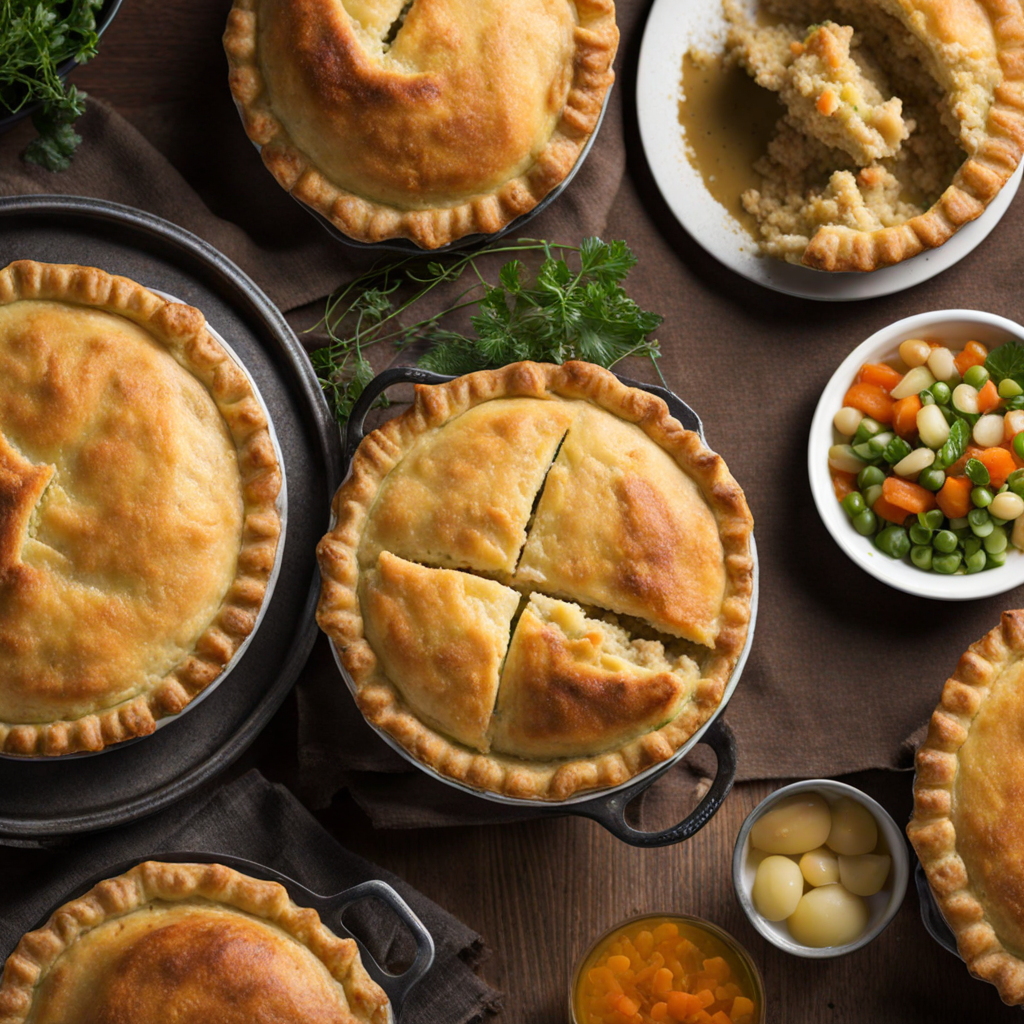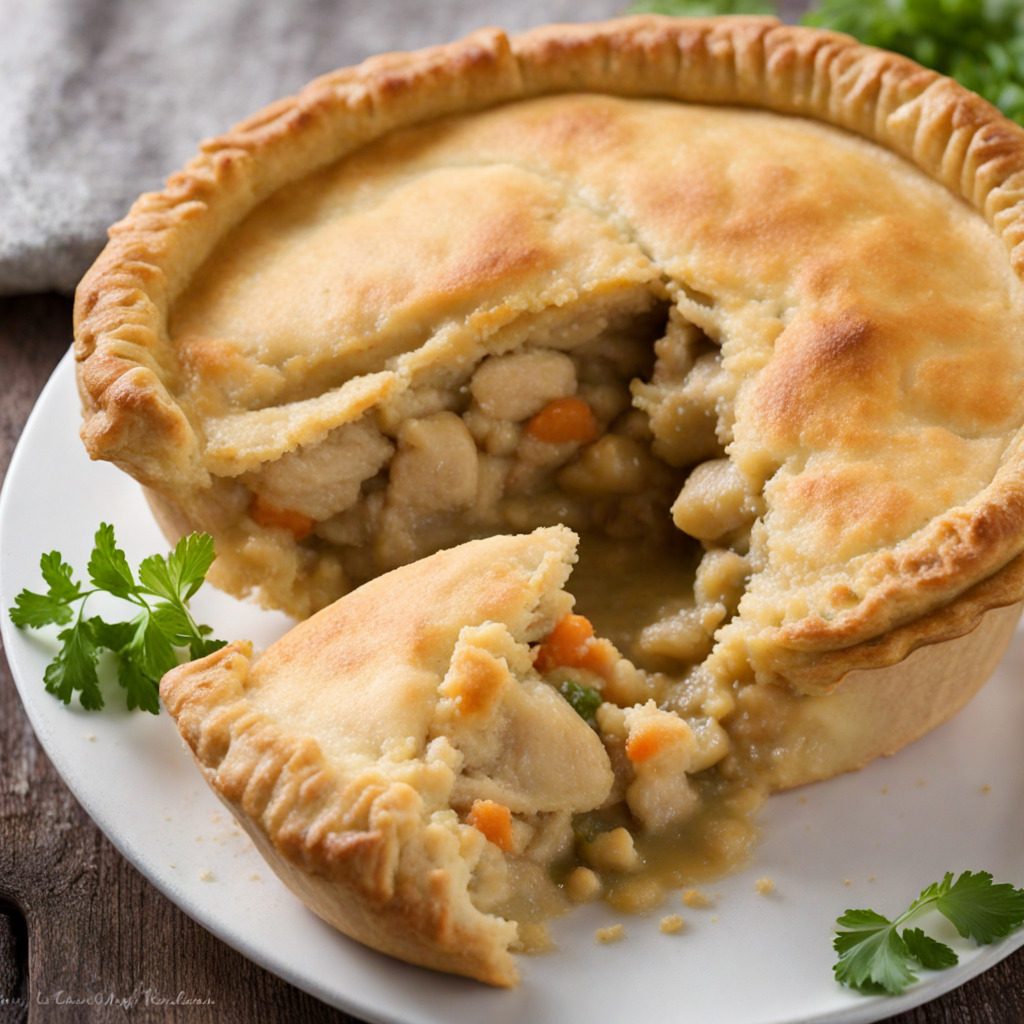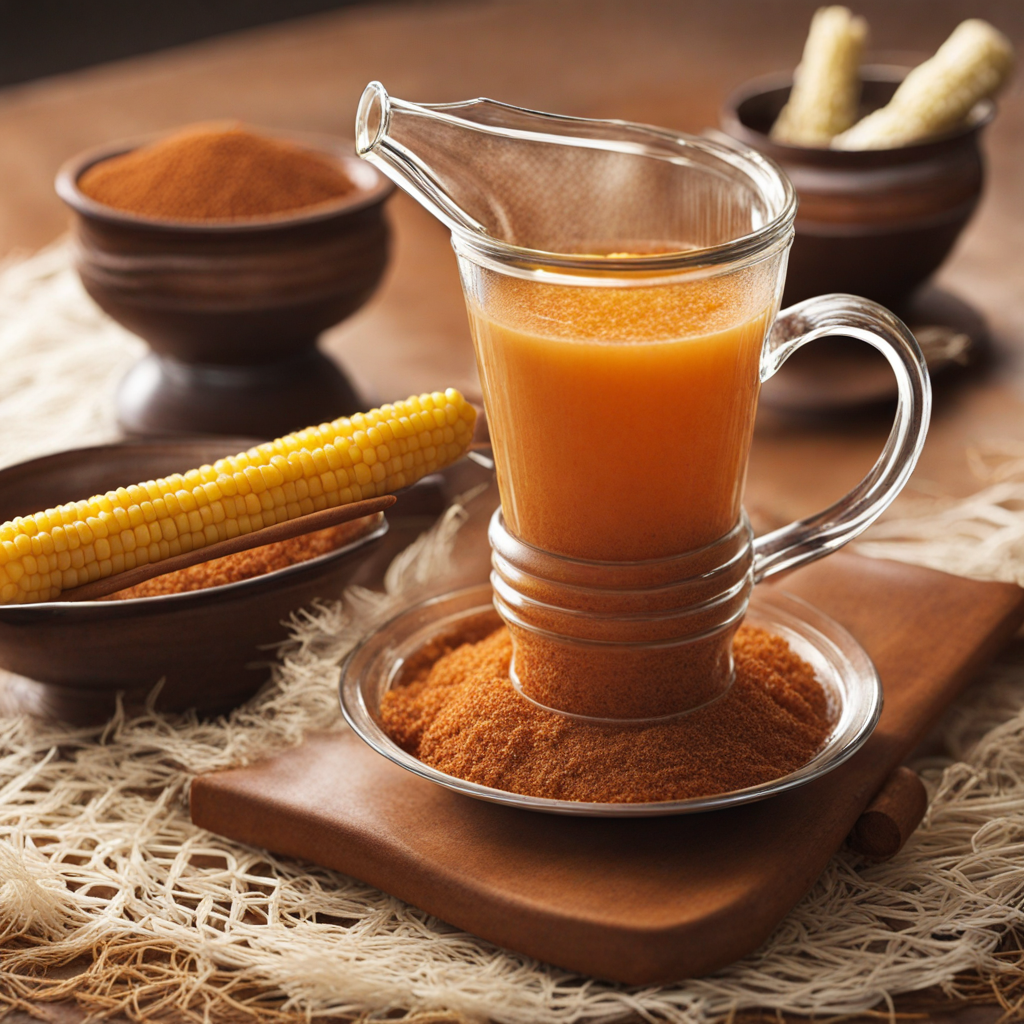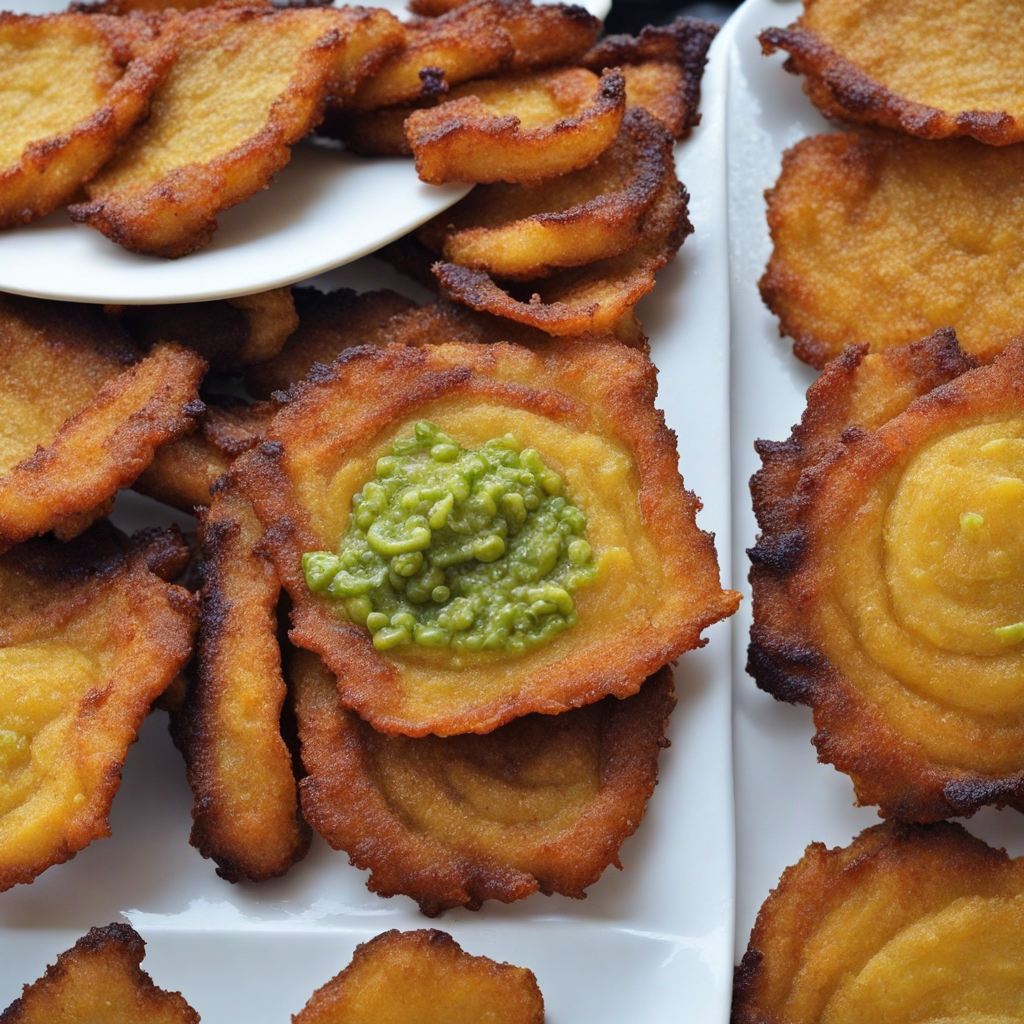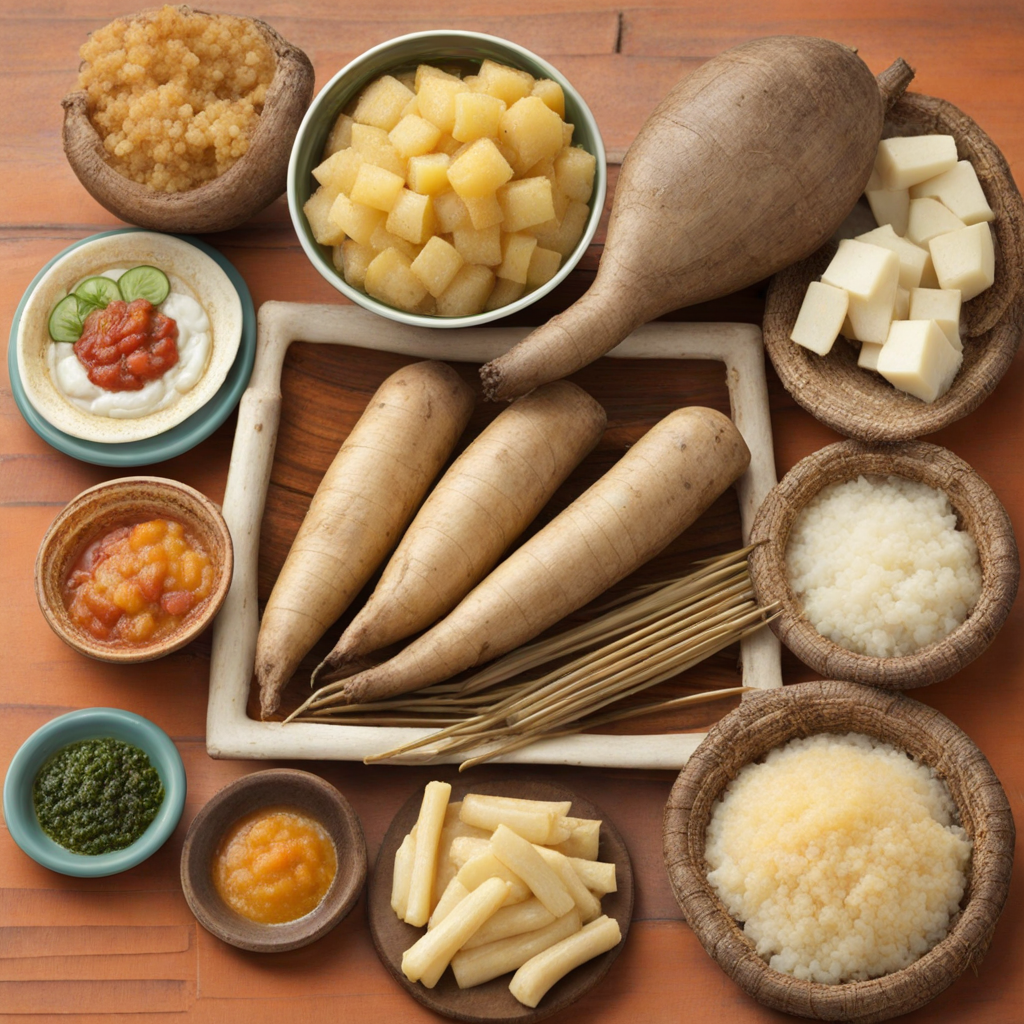Polvorosa de Pollo
Polvorosa de Pollo is a delightful Venezuelan dish that captures the essence of comfort food with its rich flavors and inviting aroma. This savory chicken pie features a flaky, buttery crust that crumbles perfectly, giving the dish its name "polvorosa," which translates to "crumbly." The filling is a luscious combination of tender, marinated chicken, sautéed onions, bell peppers, and a medley of spices that bring warmth and depth to every bite. Often, olives or hard-boiled eggs are added for an extra layer of flavor, making each piece a unique experience that reflects the culinary diversity of Venezuela. The preparation of Polvorosa de Pollo is as much an art as it is a science. The crust is made from a blend of flour, butter, and eggs, which is lovingly mixed until it reaches a crumbly texture, perfect for holding the flavorful chicken filling. The filling itself is prepared by slow-cooking the chicken until it becomes succulent and infused with the spices, then combined with sautéed vegetables. This harmonious blend is then encased in the pastry, baked to golden perfection, and served warm, often accompanied by a side salad or a fresh avocado slice, enhancing the dish's richness. When you take a bite of Polvorosa de Pollo, you experience a delightful contrast of textures—the crispiness of the crust against the tender juiciness of the chicken filling. The flavors are a symphony of savory notes, with hints of aromatic spices and a touch of sweetness from the caramelized onions. It is not just a meal; it is a celebration of Venezuelan culture, often shared at family gatherings and festive occasions. Discovering Polvorosa de Pollo is an invitation to savor the heart of Venezuelan cuisine, where each mouthful tells a story of tradition and love.
How It Became This Dish
Polvorosa de Pollo: A Culinary Delight from Venezuela Polvorosa de Pollo, a traditional Venezuelan dish, is a savory chicken pie that encapsulates the rich tapestry of the country's culinary history. Its name—"polvorosa"—derives from the Spanish word "polvo," meaning dust or powder, which refers to the crumbly texture of the pastry. This dish is more than just a meal; it is a symbol of Venezuelan culture, reflecting the nation’s history, multicultural influences, and gastronomic evolution. #### Origins The origins of Polvorosa de Pollo can be traced back to the colonial period in Venezuela. The country, with its diverse geography and rich natural resources, became a melting pot of cultures due to the interactions between Indigenous peoples, Spanish colonizers, and later African slaves. This fusion of culinary traditions is evident in many Venezuelan dishes, and Polvorosa de Pollo is no exception. The Spanish influence is particularly significant in the use of pastry, which is a staple in many Spanish dishes, such as empanadas and tarts. As the Spanish settled in Venezuela, they brought with them various cooking techniques and ingredients, including wheat flour, which became a key component of many Venezuelan recipes. The combination of local ingredients—such as chicken, vegetables, and spices—with European cooking methods led to the creation of Polvorosa de Pollo. The dish likely gained prominence in the 19th century, during a time when Venezuelans began to develop a distinct culinary identity, moving away from purely colonial influences and embracing local flavors. The name "polvorosa" suggests a connection to the crumbly, buttery texture of the crust, which has become a hallmark of the dish. #### Cultural Significance Polvorosa de Pollo holds a special place in Venezuelan hearts and homes. It is often prepared for family gatherings, celebrations, and special occasions, making it a dish synonymous with community and togetherness. The preparation of Polvorosa de Pollo is often a family affair, with generations passing down recipes and techniques, further cementing its significance in Venezuelan culture. In Venezuela, food is a central aspect of social life. Sharing a meal is seen as an opportunity to bond with family and friends, and Polvorosa de Pollo serves as a perfect centerpiece for such gatherings. Its rich flavors and comforting texture evoke feelings of nostalgia and warmth. Moreover, the dish is often served during holidays and festivities, showcasing its role in the cultural fabric of Venezuelan society. The versatility of Polvorosa de Pollo also contributes to its cultural significance. While the classic version is made with chicken, many families add their personal touch by incorporating different fillings or variations, such as vegetables or other meats. This adaptability allows the dish to evolve while retaining its essence, reflecting the diverse tastes and preferences of Venezuelan households. #### Development Over Time As Venezuela has changed over the decades—politically, socially, and economically—so too has the preparation and perception of Polvorosa de Pollo. The dish has remained a staple in Venezuelan cuisine, but its ingredients and methods have adapted to modern times. In the early 20th century, as urbanization increased and lifestyles changed, the way food was prepared began to shift. Traditional recipes, once made from scratch, started to incorporate convenience items. Pre-made crusts and ready-made fillings became common, allowing busy families to enjoy this beloved dish without the labor-intensive preparation. This shift mirrored broader trends in Venezuelan society as more women entered the workforce, leading to changes in household cooking practices. Despite these modern adaptations, many Venezuelans continue to treasure the traditional methods of preparing Polvorosa de Pollo. In recent years, there has been a resurgence of interest in traditional cooking techniques, spurred by a desire to reconnect with cultural roots. Food festivals and culinary workshops celebrating Venezuelan cuisine have emerged, showcasing Polvorosa de Pollo as a beloved dish that honors the past while embracing the future. The globalization of food culture has also influenced Polvorosa de Pollo, as Venezuelan immigrants have introduced this dish to new audiences around the world. In cities with significant Venezuelan populations, such as Miami, New York, and Madrid, restaurants and food trucks offer Polvorosa de Pollo alongside other traditional Venezuelan dishes, creating a bridge between cultures and allowing more people to experience this culinary gem. #### Conclusion Polvorosa de Pollo is more than just a dish; it is a reflection of Venezuela's rich history and cultural identity. As a product of colonial influences and local adaptations, it embodies the spirit of a nation that has embraced its diverse heritage while evolving in the face of change. Its significance in family gatherings and celebrations cements its status as a cherished part of Venezuelan cuisine. As the world continues to globalize, Polvorosa de Pollo remains a testament to the power of food as a connector of people, cultures, and traditions. Whether enjoyed in a bustling Venezuelan household or at a distant restaurant, this savory chicken pie offers a taste of Venezuela’s past, present, and future—a delicious reminder of the shared experiences that unite us all.
You may like
Discover local flavors from Venezuela


